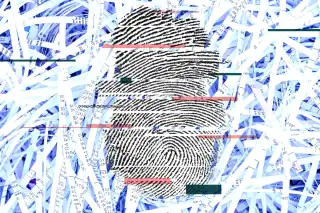5 Steps to Take Right Away if Your Personal Information is Stolen

If your personal information has been stolen, don’t wait to take action. Below are 5 steps you should take immediately to restore your identity — the quicker you take action, the less damage the thief can do and the faster you can get back to normal. The good news is, you don’t have to go through the process alone.
LifeLock by Norton's dedicated identity restoration specialists will guide you through the entire recovery process — and help you resolve disputes with merchants and other relevant parties, including credit card companies, financial institutions, government agencies, or other official parties. They can also assist with paperwork you might have, from your matter's initiation to its resolution, and reimburse you for up to $1 million in stolen funds.
1. Contact the companies and banks where the fraud occurred
- Contact the fraud department of the companies and financial institutions where the identity thief used your personal information to ask that they stop reporting inaccurate information to credit bureaus and debt collectors.
- Consider closing or freezing any compromised accounts to prevent further unauthorized transactions.
- Request copies of applications or records associated with transactions or accounts linked to the misuse of your personal information.
2. Place a fraud alert with at least one of the three credit bureaus
Next, contact at least one of the three major credit bureaus (Equifax, Experian, and TransUnion) directly to place a fraud alert. A fraud alert will make it more challenging for identity thieves to open new accounts using your personal information. Fraud alerts typically last for 90 days, but you can renew them if needed.
After placing the fraud alert, it is a good idea to request a free copy of your credit report from each credit bureau. Review the reports carefully for transactions you don’t recognize to ensure you haven’t missed any suspicious activity.
3. Report identity theft to the FTC and other government agencies
- Federal Trade Commission: Fill out the identity theft affidavit at IdentityTheft.gov or call 877-438-4338. The FTC will create a report you could use to prove the identity theft to businesses and financial institutions.
- Alert your state’s DMV or licensing agency: Ask them to place a flag on your license number in case an identity thief uses it for criminal identity theft.
- Alert your local police department: This is especially true if you know the identity thief or have information that could help with a police investigation. Provide them with your official FTC identity theft report, a government-issued photo ID, proof of your current address, and proof that your identity has been used for identity theft—such as debt collection notices. Obtain a copy of your police report.
- Contact the IRS Identity Protection Specialized Unit at 800-908-4490 (ext. 245) to ensure that you aren’t the victim of tax fraud. Be sure to respond to any notices from the IRS that may be a sign of fraudulent activity.
4. Check your devices for malware
In some cases, an identity thief may use malware (malicious software) to infect your devices and steal your personal information. To help ensure nobody is snooping on your device, install antivirus software like Norton 360 Deluxe to help protect your devices from hackers, viruses, and malware and run regular scans to check for malicious software.
5. Secure your online accounts
Change the passwords and PINs for your online accounts, email, and financial accounts to prevent further unauthorized access. Enable two-factor authentication and store your passwords using a trusted password manager. This is included with some of Lifelock's subscription plans. These added layers of security can help keep identity thieves out of your online accounts and away from your private information.
Getting Started with LifeLock
Even after following these five steps, you may still be at risk of identity theft in the future. While nobody can totally prevent identity theft, identity theft protection services like LifeLock can provide you with around-the-clock fraud protection services, 3-bureau credit monitoring, and if your identity is compromised, 24/7 access to identity restoration specialists.